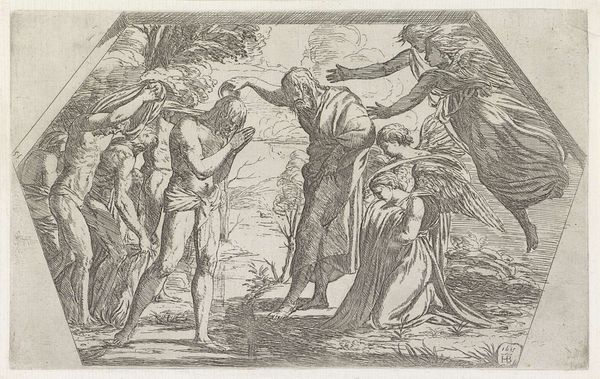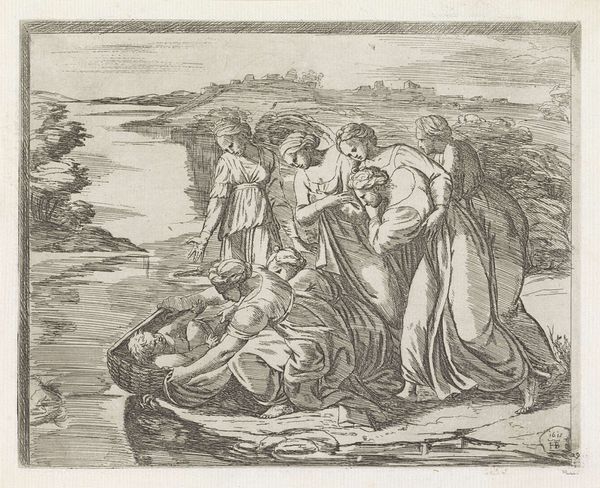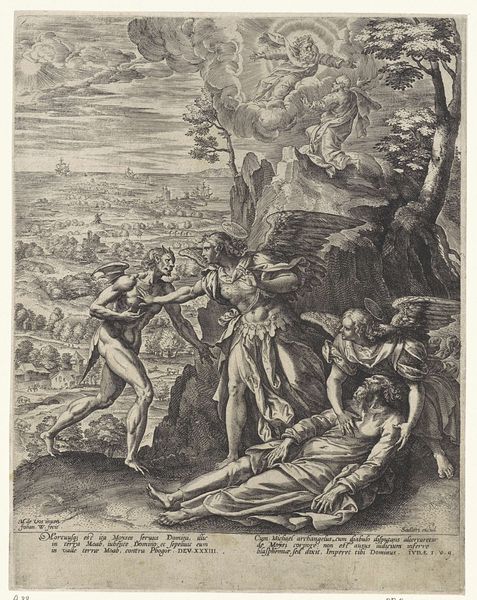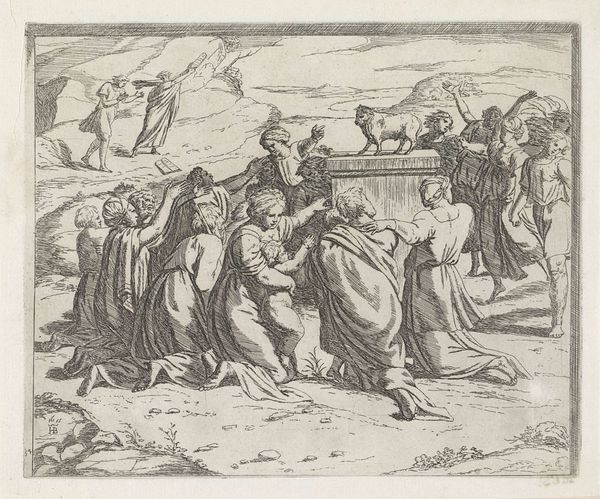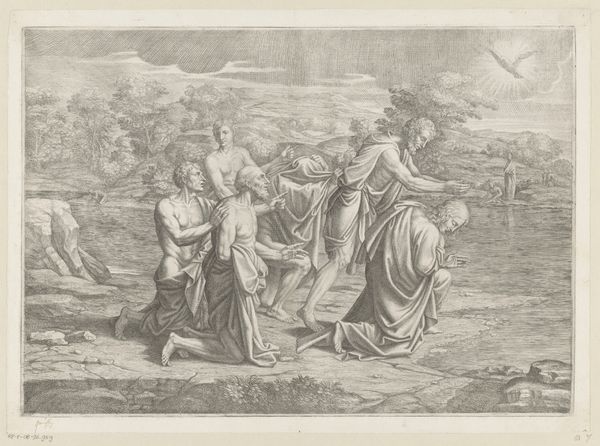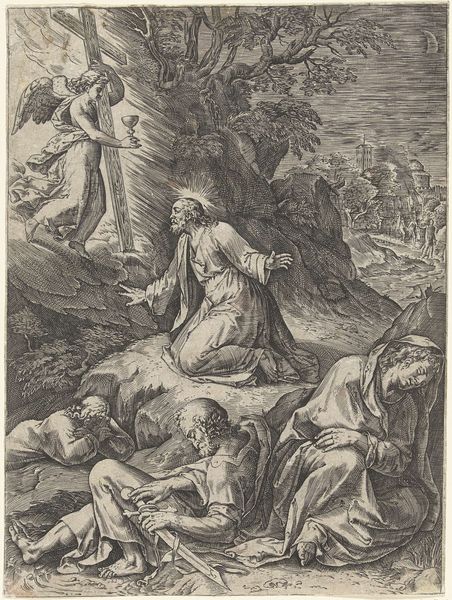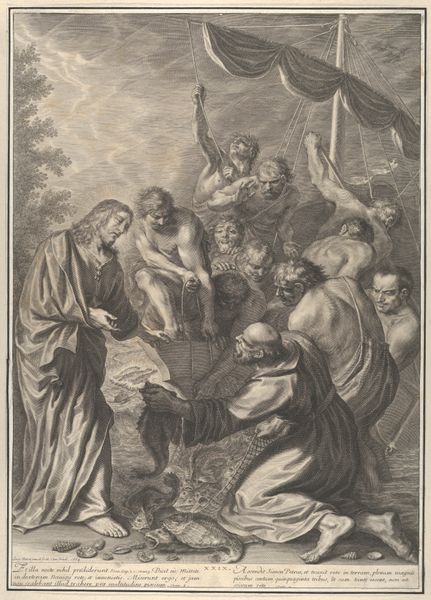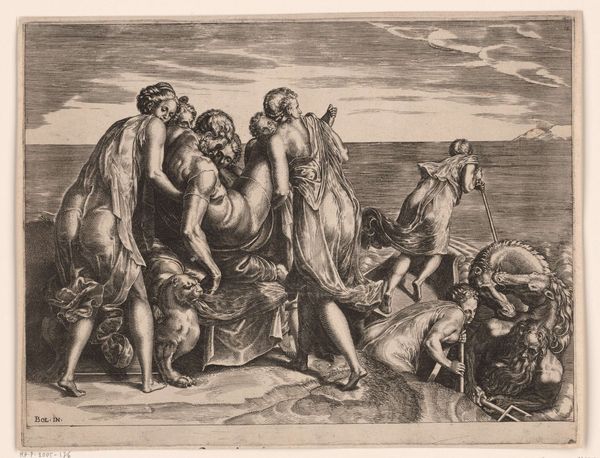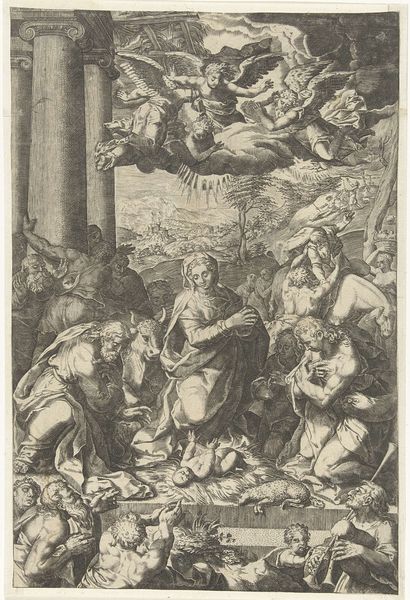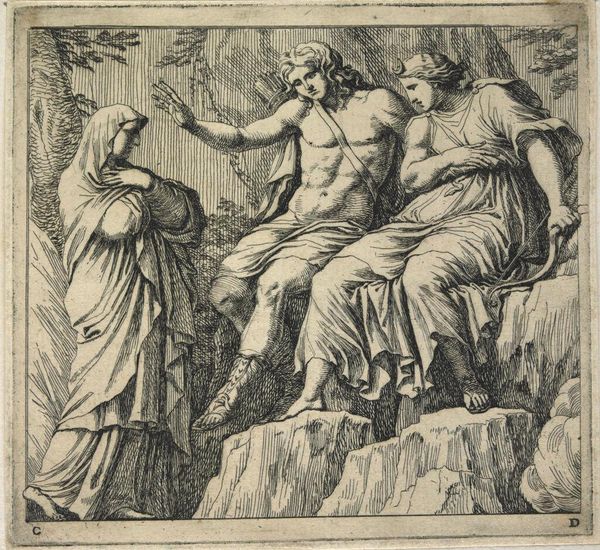
print, engraving
#
ink drawing
#
narrative-art
#
baroque
# print
#
figuration
#
history-painting
#
engraving
Dimensions: height 306 mm, width 434 mm
Copyright: Rijks Museum: Open Domain
Paul van Somer the Younger made this print, "Baptism of Christ in the Jordan," sometime around the turn of the 18th century. It's an etching, meaning that the artist used acid to bite lines into a metal plate, which was then inked and printed. Look closely, and you can see the characteristic crisp lines and the fine hatching used to create tone and shadow. This wasn't just about casually replicating an image; it demanded expertise. The etcher needed to understand the chemistry of acids, the physics of the printing press, and the drawing skills to translate the scene onto the plate. Back then, printmaking was also a key part of visual culture. It allowed images to be distributed widely, enabling access to religious scenes like this one, even for people who couldn't afford an original painting. This print isn't just a work of art; it’s a testament to skilled labor, clever technology, and the democratization of images in early modern Europe. We can see the labour involved and the social context in which it was made.
Comments
No comments
Be the first to comment and join the conversation on the ultimate creative platform.
